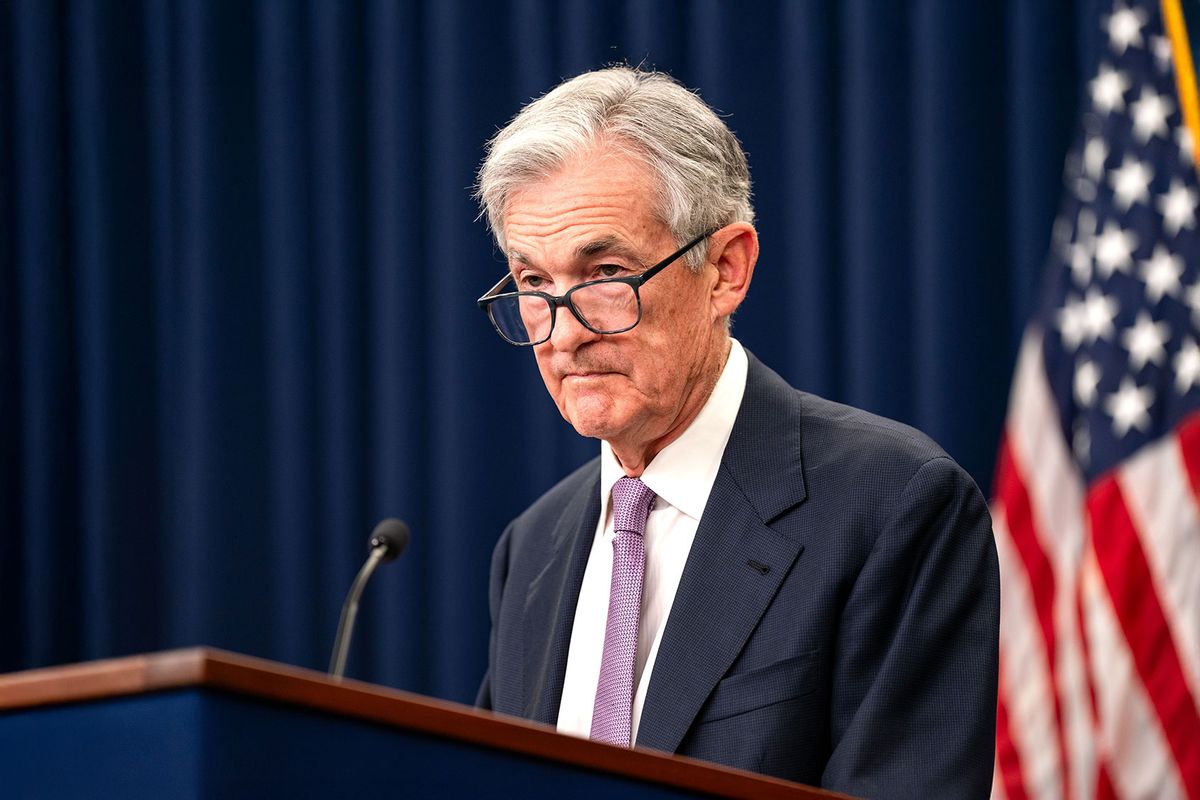The Federal Reserve on Wednesday committed to a final interest rate cut this year, as widely expected by economists and investors, but suggested fewer cuts next year.
The Federal Open Market Committee (FOMC) lowered the rate by a quarter point to a target range of 4.25% to 4.5%, marking the third consecutive reduction of 2024. Fed policymakers also signaled two cuts in 2025, reducing earlier projections in half to adjust for market expectations. Following the news, U.S. stocks slid to one of their worst days of the year, with the Dow Jones Industrial Average losing 1,123 points and posting its first 10-day losing streak since 1974.
Despite the anticipated cut, concerns linger about the persistence of inflation and the potential impact of the Trump administration's policies. Fed chair Jerome Powell, addressing reporters in Washington, D.C., struck a cautious tone in his remarks.
“Recent indicators suggest that economic activity has continued to expand at a solid pace,” he said, citing GDP of 2.8% in the third quarter and resilient consumer spending. “The slower pace of cuts for next year really reflects both the higher inflation readings we’ve had this year and the expectation inflation will be higher.”
Going into the December meeting, market expectations were nearly unanimous, with about 9 in 10 economists polled by FactSet forecasting another cut. However, the outlook for 2025 remains less certain, with some analysts scaling back their projections for future rate reductions.
Others projected a “heated debate” at the FOMC two-day meeting, given the economy is doing better than anticipated.
“The economy remains stronger than participants at the meeting thought it would be when they started cutting in September, while improvements in inflation appear to have stalled,” Diane Swonk, chief economist at accounting firm KPMG, wrote in her preview note of the Fed meeting. “Some of that may be in response to recent hurricanes and surge in replacement demand but underscores how susceptible we are to supply chain disruptions and demand shocks.”
Of note, there has been an IV fluid shortage at hospitals since late September when Hurricane Helene damaged the North Carolina plant responsible for 60% of IV fluid supply.
The economic landscape presents a mixed picture. The services sector is booming, with the S&P Global Flash US PMI Composite Output Index rising to 56.6 in December, signaling the fastest expansion of business activity since March 2022. However, manufacturing tells a different story, with output falling sharply due to weak export demand.
This dichotomy underscores the challenges facing the Fed as it navigates conflicting economic signals.
The risk of inflation continues to loom large. November's Consumer Price Index rose 2.7%, outpacing the Fed's 2% target. This persistent inflationary pressure, coupled with potential policy shifts under the incoming administration, has led some economists to predict a more cautious approach from the Fed in the coming year.
Even if the Fed scales back rate cuts, inflation could still roar back due to a number of economic factors and geopolitical risks, analysts say.
“This inflation resurgence need not necessarily be tied to monetary policy, there are a number of plausible risks to the inflation outlook: escalation of any of the several ongoing geopolitical conflicts could push commodity prices higher; the imposition of higher tariff rates by the U.S. could prompt retaliatory tariffs abroad, pushing the costs of all manner of items higher,” Lawrence Nelson, principal economist, S&P Global Market Intelligence, told Salon.
“Regardless of the cause, the Fed will take much of the blame for the inflation resurgence, and inflation expectations will rise," Nelson added. "To regain its credibility, the Fed would have to impose restrictive policy even more forcefully than they did during the initial inflation battle, tipping the U.S. economy into a painful recession until inflation has returned all the way to 2%.”
With economic uncertainties on the horizon, Powell and his colleagues at the Fed face the delicate task of balancing growth stimulation against inflationary risks in the year ahead.
“The Fed can’t declare a victory over inflation until the plane has landed, the passengers have disembarked and the plane is in the hangar. We’re nowhere near that right now,” Swonk, the KPMG economist, told Salon. “And you can see that in the Fed’s forecast, it’s a very slow process.”
Read more
about personal finance



Shares